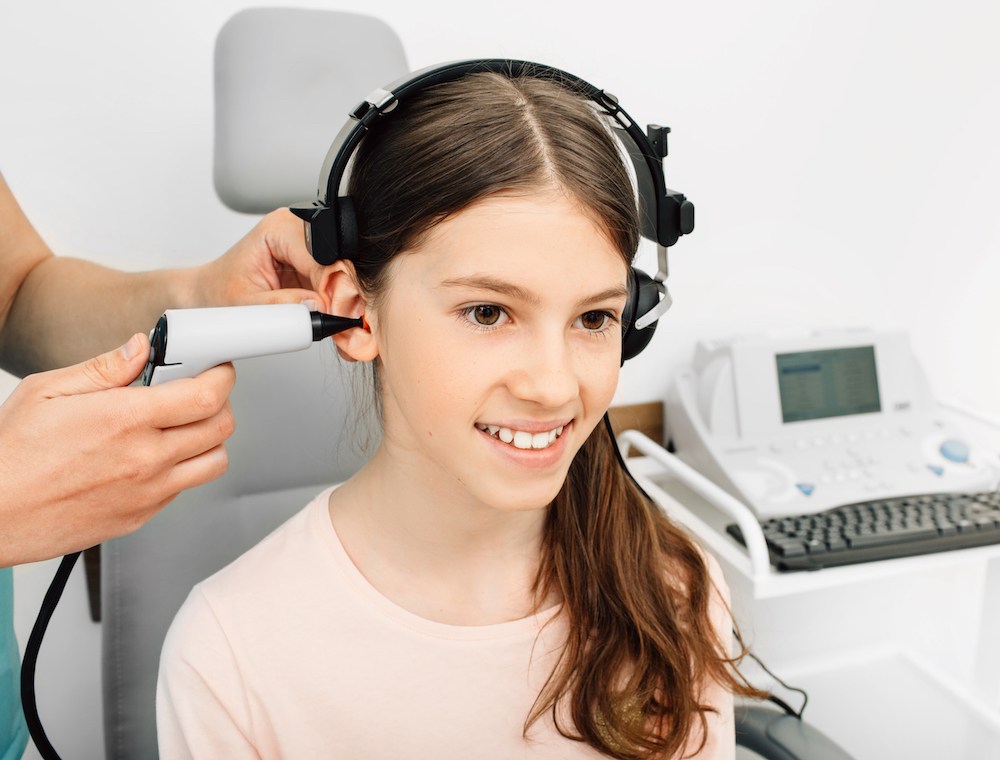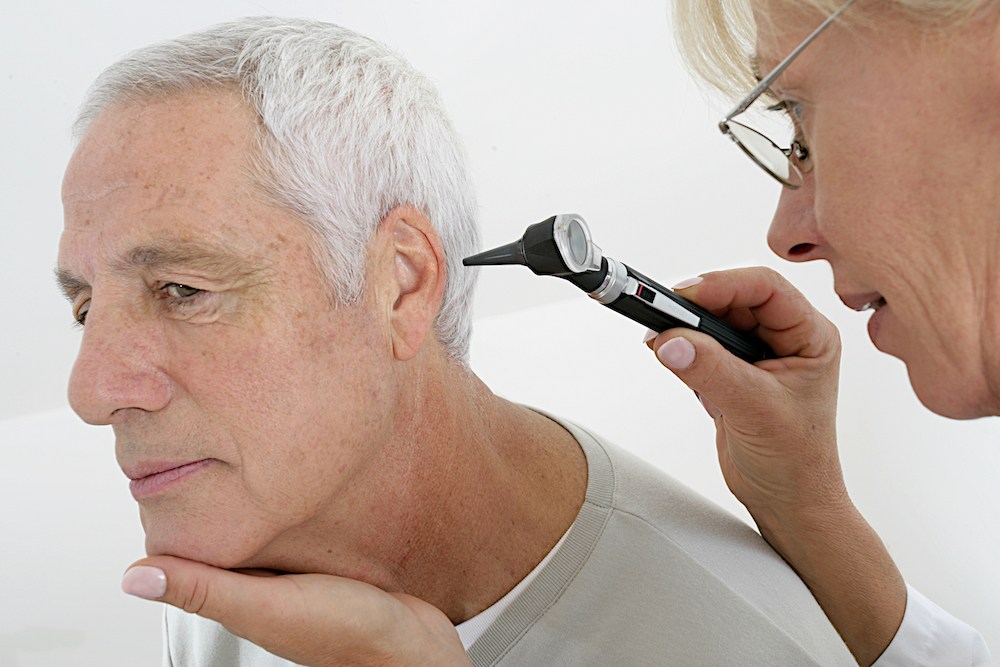How to Advocate for Yourself During a Hearing Test
Being an active participant in your hearing test means more than just
And Jesus said, “He who has ears to hear, let him hear.” MARK 4:9

By: admin | March 21, 2025
If you’ve worn hearing aids in the past or know someone who has, you’re probably familiar with that annoying whistling sound they sometimes made. This high-pitched squeal, known as feedback, was once an unavoidable part of wearing hearing aids. It would often appear at the worst possible moments – during quiet conversations, in meetings or when you hugged a loved one.
This frustrating noise didn’t just create embarrassing situations; it actually prevented many people from enjoying the full benefits of their hearing aids. When feedback occurred, your natural reaction was likely to turn down the volume or remove the hearing aid entirely – leaving you unable to hear clearly just when you needed it most.
Today’s hearing aids tell a different story. Modern feedback cancelation technology has virtually eliminated this problem. This important advancement means you can now focus on what matters – the conversation you’re having, the music you’re enjoying or the sounds of your grandchildren playing – without worrying about sudden, unwanted whistling.
With feedback concerns removed, you can wear your hearing aids with confidence in any situation, knowing they’ll perform reliably whether you’re in a crowded coffee shop, talking on the phone or simply relaxing at home.
Modern hearing aids are compact, sophisticated devices designed to improve hearing by amplifying sound and filtering out background noise. They consist of several key components that work together to deliver clear and natural sound to the wearer. The main parts of a hearing aid include the microphone, amplifier, speaker (or receiver) and the battery.
The microphone is the first point of contact for sound. It picks up sounds from the environment, like conversations, background noise and other sounds. The microphone then converts these sounds into electrical signals. These signals are sent to the amplifier, which is the heart of the hearing aid. The amplifier increases the volume of these signals, making them louder and easier to hear. The strength of the amplification can be adjusted based on the individual’s hearing needs, ensuring that the sounds are delivered at a comfortable level.
After amplification, the processed signal is sent to the speaker (or receiver), which converts the electrical signals back into sound and delivers it into the ear. The receiver is responsible for producing the sound that the wearer hears, and its quality is crucial for ensuring clear, crisp sound that matches the natural acoustics of the environment. In addition to these main components, modern hearing aids often include advanced features like noise reduction, directional microphones and feedback cancelation. These features help to enhance sound quality, reduce distractions and provide a more comfortable listening experience, even in noisy environments.
Finally, the battery provides the power necessary for all of these components to function. In modern hearing aids, batteries are typically small and long-lasting, with many models offering rechargeable options. Depending on the type of hearing aid, wearers can choose between disposable or rechargeable batteries, with rechargeable models offering the convenience of nightly charging for continuous use throughout the day.
Sound amplification in hearing aids refers to the process of increasing the volume of sounds in the environment to make them more audible for individuals with hearing loss. When someone has hearing loss, certain frequencies or sounds become more difficult to hear, often leading to challenges in communication. Hearing aids help address this issue by capturing these sounds, amplifying them and delivering them in a way that makes it easier for the wearer to hear clearly.
The amplification process begins with the microphone of the hearing aid, which picks up sounds from the surrounding environment. These sounds are then converted into electrical signals, which are processed and amplified by the hearing aid’s internal circuits. The degree of amplification is typically adjustable, allowing for a personalized experience based on the wearer’s hearing needs and preferences. After amplification, the signals are sent to the receiver (speaker) of the hearing aid, which converts the electrical signals back into sound and directs them into the ear canal.
Sound amplification is particularly useful in situations where background noise can interfere with communication, like noisy spaces or busy social settings. Modern hearing aids are equipped with advanced features like noise reduction and directional microphones that enhance the clarity of speech and minimize unwanted noise. This makes the amplified sounds more intelligible, even in challenging listening environments.
Feedback in hearing aids occurs when amplified sound from the receiver (or speaker) is picked up by the microphone, creating a loop that leads to a whistling or squealing sound. This is typically caused when the hearing aid’s receiver is too close to the microphone, or if there is a poor fit in the ear canal, causing sound to leak out and re-enter the microphone. It can also happen if there is earwax buildup or moisture in the device that interferes with its components.
However, modern hearing aids are equipped with advanced technology designed to minimize or eliminate feedback. Features like directional microphones, noise reduction and feedback cancelation systems have greatly reduced the occurrence of this issue. These technologies work together to adjust the amplification and fine-tune the device, ensuring that feedback is less likely to happen. Additionally, improved designs and more secure fitting options help prevent sound leakage, further reducing the chance of feedback. As a result, wearers of newer hearing aids generally experience fewer problems with whistling or squealing, leading to a more comfortable and effective listening experience.
Feedback cancelation in modern hearing aids is designed to eliminate the annoying whistling or squealing sounds that can occur when amplified sound from the receiver loops back into the microphone. This process works through advanced signal processing technology that detects and removes the feedback before it becomes audible.
When a hearing aid detects feedback, its feedback cancelation system analyzes the sound pattern and creates an inverse signal to cancel out the unwanted noise. Essentially, the device “listens” for the feedback and automatically adjusts the amplification in real-time to neutralize it. This can be done by adjusting the volume or frequency range of the sound being amplified or by modifying the microphone’s sensitivity. Feedback cancelation systems are constantly working in the background to ensure that the wearer experiences clear sound without disruption from unwanted noise, allowing for a more natural and comfortable listening experience. Modern hearing aids have become highly efficient at managing feedback, thanks to these adaptive technologies, making feedback a much less common problem than it used to be.
Modern hearing aids come with a variety of features designed to improve the listening experience and enhance the overall effectiveness of the device. One of these features is noise reduction. Hearing aids equipped with noise reduction technology are able to differentiate between speech and background noise, lowering the amplification of unwanted sounds while prioritizing the clarity of speech. This can make a big difference in environments with lots of background noise, like crowded restaurants or busy streets, allowing wearers to focus on conversations without being overwhelmed by surrounding sounds.
Another valuable feature found in many hearing aids is directional microphones. These microphones help by focusing on sounds coming from a specific direction, typically from the front, while reducing noise from the sides and behind. This is particularly useful in situations where hearing aids would otherwise pick up too much background noise, like in a group conversation or during meetings. Directional microphones help make sure that the most important sounds, like the voices of people you’re talking to, are heard more clearly and with less interference from other noises.
Wireless connectivity is also becoming a standard in many modern hearing aids, offering additional convenience and flexibility. With Bluetooth technology, hearing aids can connect to smartphones, televisions and other devices. This means you can stream audio directly to your hearing aids for an improved listening experience, whether you’re enjoying a phone call, listening to music or watching your favorite TV show. Wireless connectivity also enables remote adjustments, so wearers can change settings or volume directly from their phone or other paired device without needing to manually adjust the hearing aid. These features work together to make hearing aids more adaptable to different environments and wearer needs, ultimately enhancing day-to-day communication.
If you’re experiencing sound issues with your hearing aids, it may be time to consult an audiologist. Common signs that indicate a need for professional attention include distortion in the sound, feedback noises or inconsistent amplification. If you notice that your hearing aids aren’t providing clear or natural sound, or if there are sudden changes in volume or quality, it’s important to have them checked. Similarly, if you experience buzzing, whistling or muffling that doesn’t seem to resolve with simple adjustments, an audiologist can help identify the source of the problem and provide solutions. Sound issues like these may indicate that your hearing aids need maintenance, repairs or adjustments to ensure they’re working properly.
Additionally, if you’ve recently experienced changes in your hearing, it’s crucial to schedule an appointment with your audiologist. Changes in hearing can be subtle, but they can still affect how well your hearing aids perform. An audiologist can evaluate whether your hearing has shifted and make the necessary adjustments to your hearing aids to accommodate any new needs. Regular check-ups are a great way to ensure that your hearing aids are optimized for your current hearing levels, and an audiologist can also offer advice on improving your overall hearing health and address any technical concerns with your devices.
Thanks to modern technology, the advancements in hearing aid design have made this issue a thing of the past. With features like real-time feedback cancelation, wearers can now enjoy clearer, more natural sound without interruption. This improvement means no more awkward moments when you’re trying to hear in noisy environments or share a quiet moment with someone close to you. Instead of worrying about sudden whistling, you can focus on enjoying the sounds of your daily life without distractions.
Even the most advanced technology is only as good as your understanding of it. So don’t hesitate to seek professional advice if you need help managing or optimizing your hearing aid settings. The team at Trinity Hearing Care is always ready to assist you in achieving the best possible hearing experience. If you’re in Hicksville, Ohio or a nearby community, feel free to contact us at (419) 416-6141 to learn more about your options.
Tags: benefits of hearing aids, hearing aid services, hearing aid styles

Being an active participant in your hearing test means more than just
By: admin | November 18, 2025

Feeling nervous before a hearing test is very common. Many people have
By: admin | September 24, 2025

Our hearing plays a vital role in how we communicate, work and enjoy
By: admin | May 23, 2025
